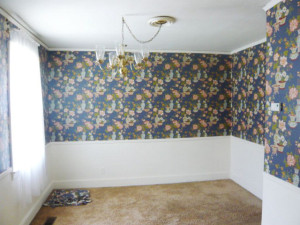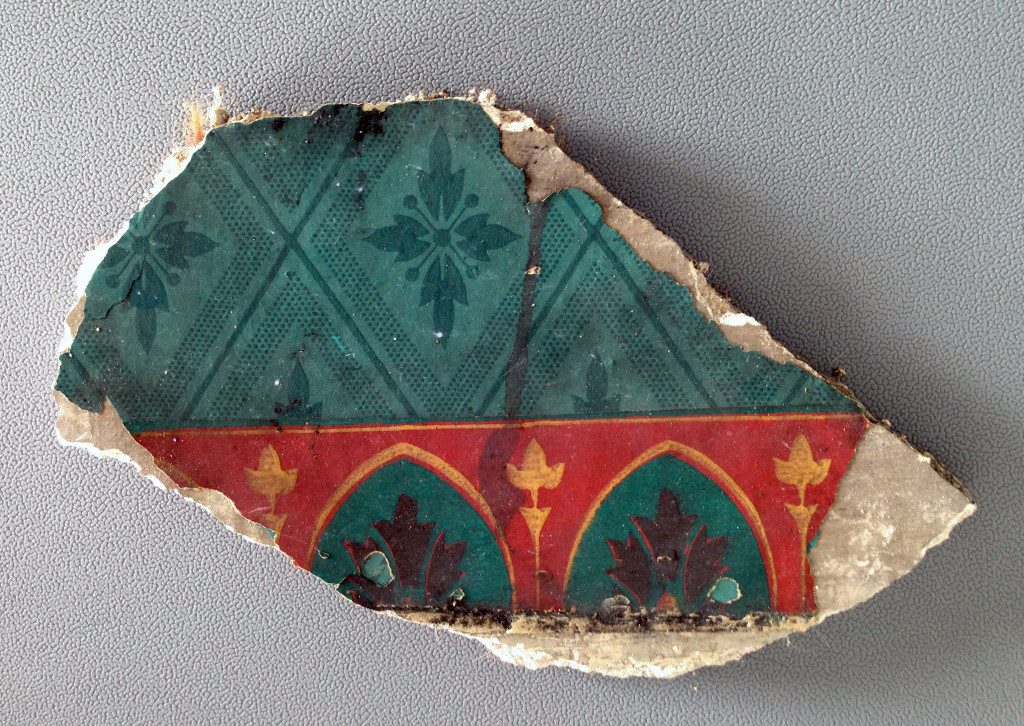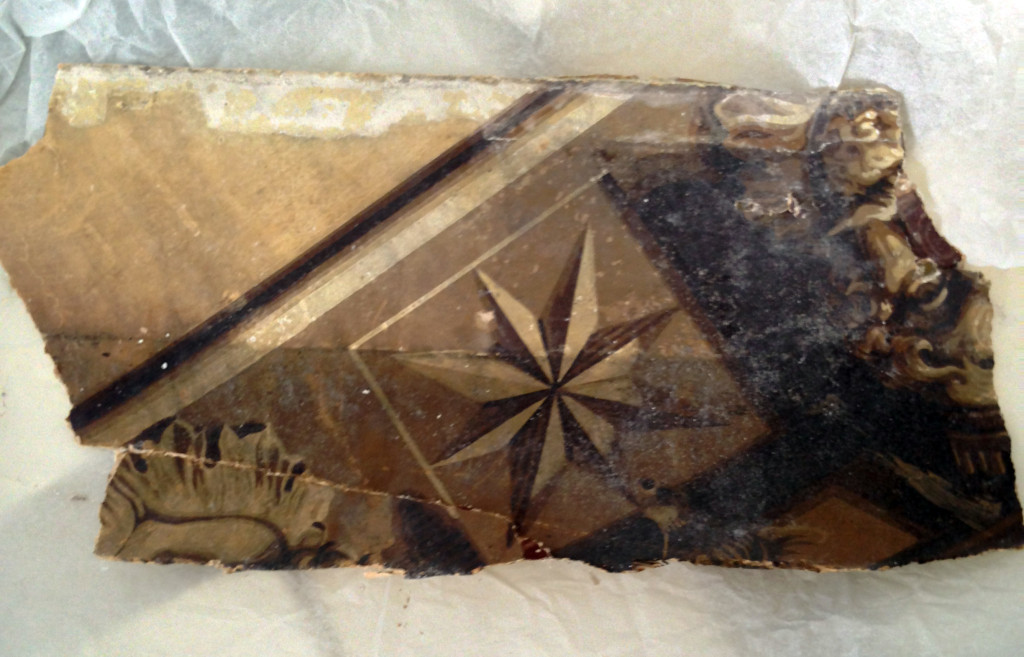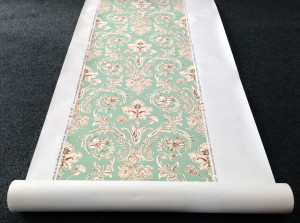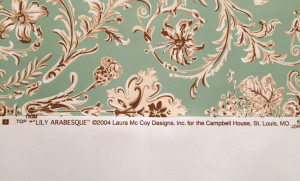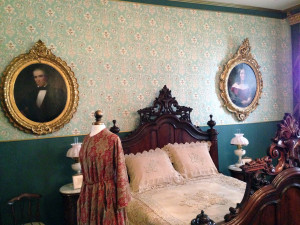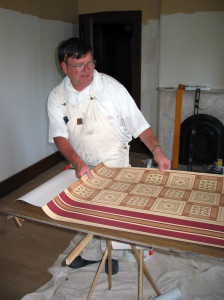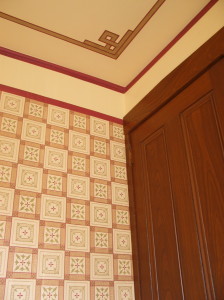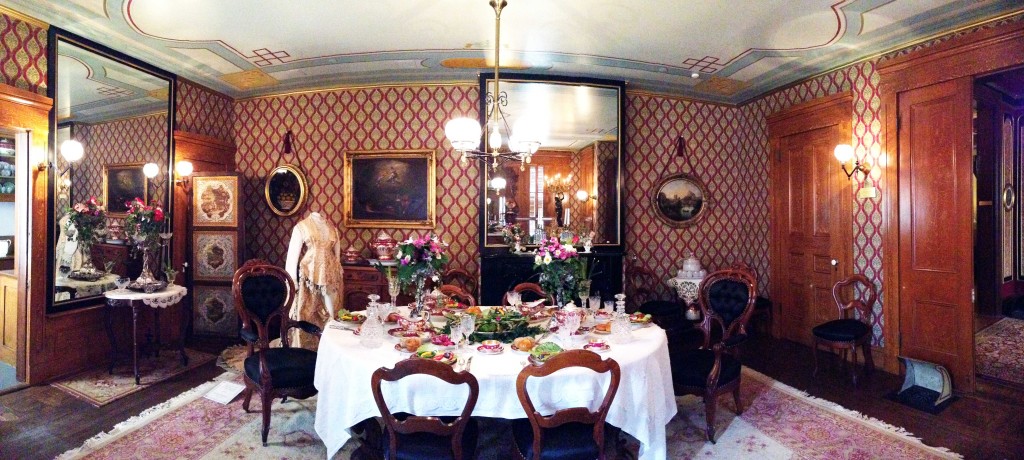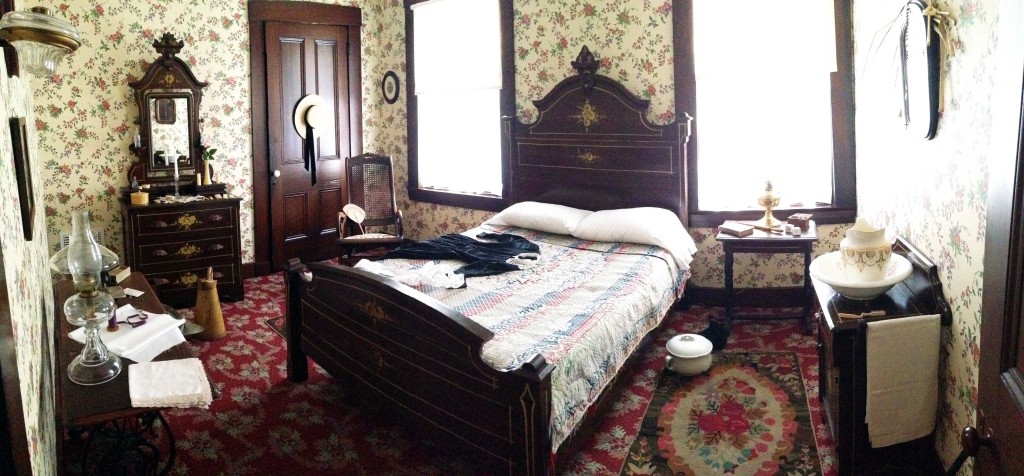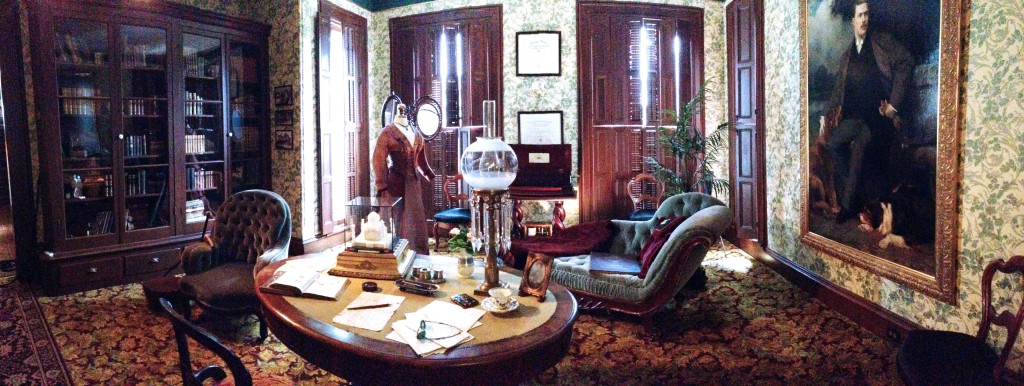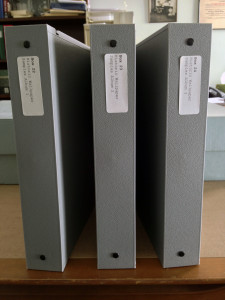
Binders full of hundreds of plastic-sleeved wallpaper fragments revealed during the restoration can be found in our storage area.
This week’s topic in our “Peeling Back the Layers” series looks at some of the incredible wallpaper that has graced the walls of Campbell House since its construction in 1851.
When the museum began its extensive restoration project in 2000, great care was taken to preserve anything and everything that was found in walls, under floorboards, and under layers of paint and wallpaper. Everything—from large original doors and windows to the smallest scrap of faded wallpaper was saved and is preserved for future study here at Campbell House. Our climate-controlled archives room is chock-full of binders and boxes containing all of these fragments.
Over time, wallpaper itself has faded in and out of style and, along with this, lots of different designs saw peaks in popularity. The first thing a lot of us think of when think of wallpaper might be something like you see to the right.
Yikes, right? Have no fear—our wallpaper is way more interesting than Grandma’s dining room.
Like the linoleum we talked about a couple of weeks ago, we found quite a few layers of wallpapering when we began the restoration.
After uncovering all of these nifty scraps, we began the process of recreating wallpapers and interiors that matched the originals, which was an enormous project, read more about that and see some neat pictures of us at work during the restoration after the break—
Here’s a taste of what we have in our wallpaper collection:
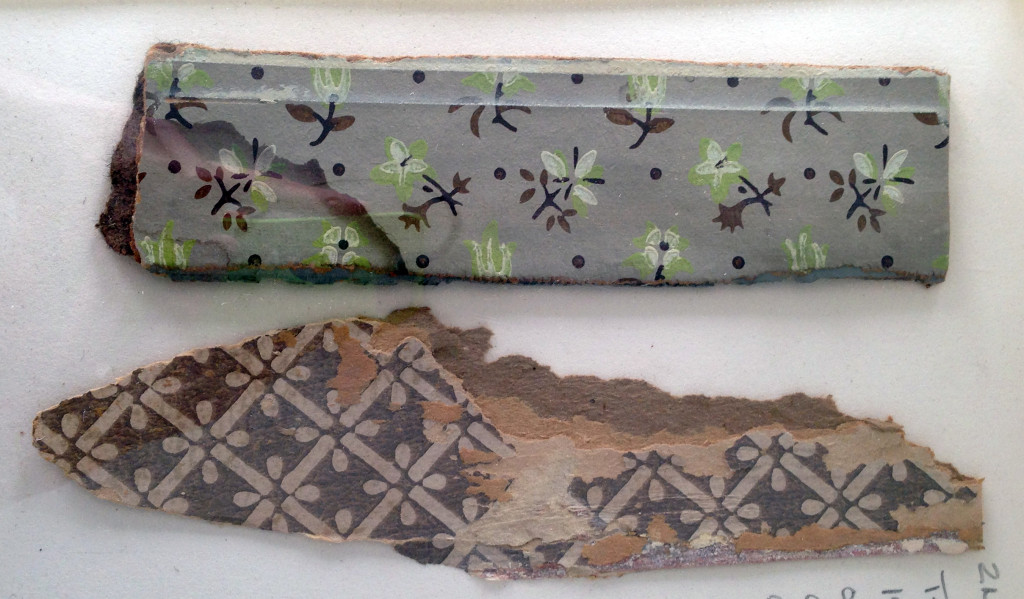
Wallpaper samples found in the second floor servants hall with a “felt board” backing, dating from the early 20th century.
- Circa 1860 wallpaper border fragment found in the third floor stairwell. The border accented an unusually large patterned Ashlar paper—designed to look like finished brick or stone. See the current iteration of Ashlar paper found today at Campbell House below.
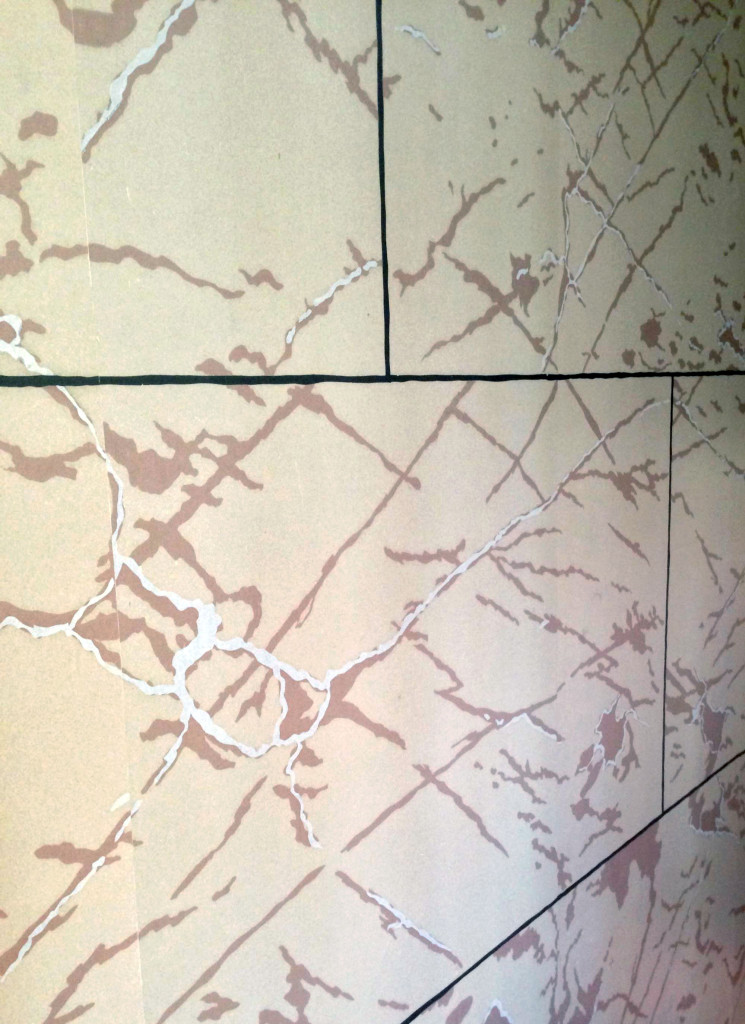
Ashlar block wallpaper on the walls at Campbell House today- installed in the early 2000s during our restoration.
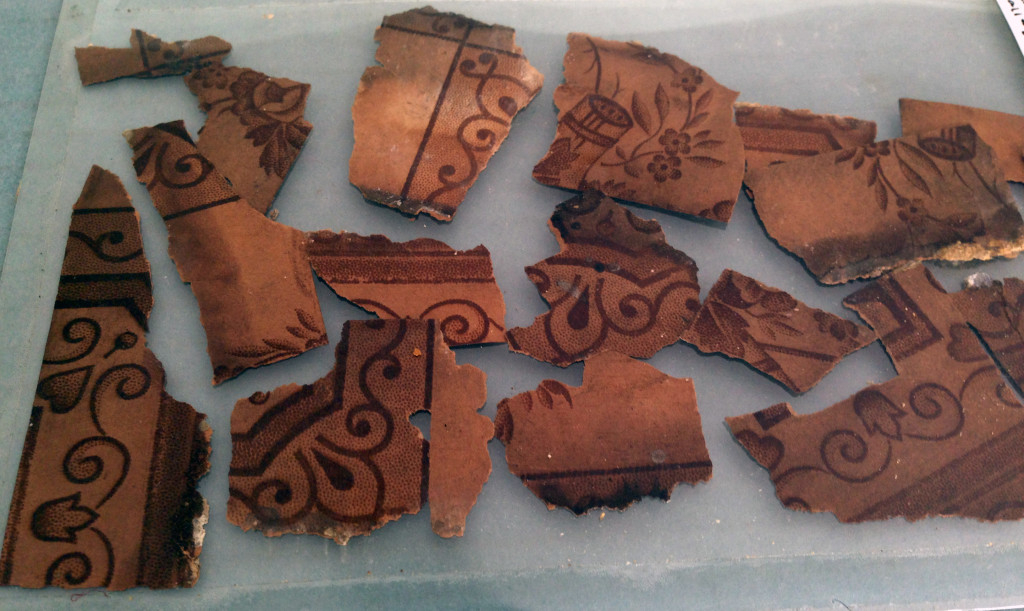
Block floral motif pattern found under the crown molding in the servants hall and outside the second floor bathroom.
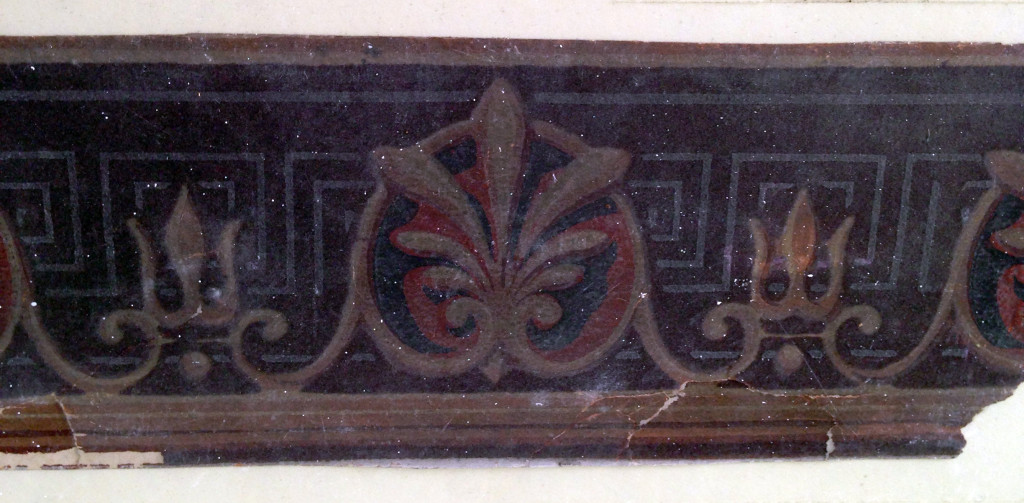
Border paper fragment found in Mrs. Kyle’s room behind mantle facade dating from the 1860s- this likely predated the many extensive structural additions and improvements that the Campbells made to their home over time.
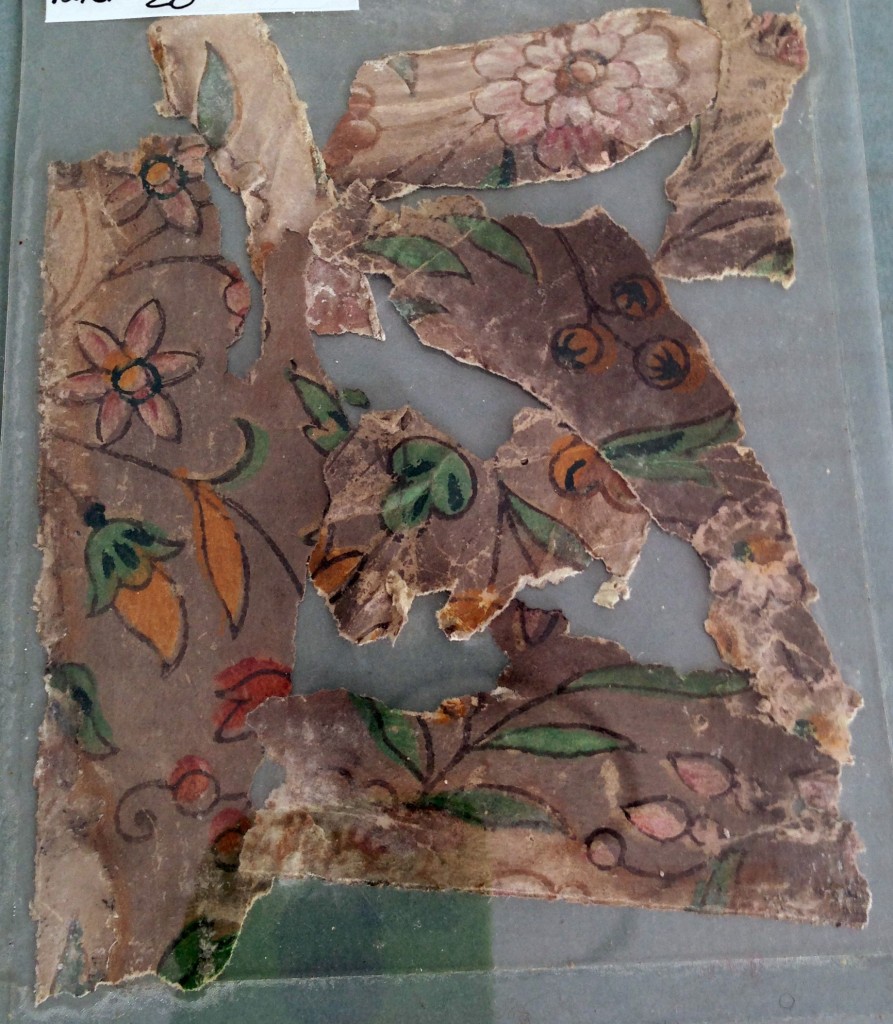
Wallpaper fragment found on the west wall of CHM’s library. This was found behind a dividing wall, meaning it dates from before the 1880s and was installed by Robert and Virginia.
Wallpaper Restoration
After uncovering all of those neat historical pieces of wallpaper, we began the process of re-papering with specially designed spot-on recreations of what originally hung on the Campbells’ walls. This was quite the process—wallpapering in the 1880s was nothing like what it is today.
Wallpaper had to be recreated through color analysis and photos of the various rooms that were taken in the 1880s, when it arrived it came in rolls like this:
The wallpaper came rolled in 30 inch-wide strips. However, the design was only on 19 inches of the strip, which meant our installers had to hand cut the edges of the wallpaper and pay extra special attention to make sure edges matched up once the paper was pasted to the walls.
All of the wallpapers used in our restoration were custom-designed to match original wallpapers found in the house during the 19th century by specialty design firms.
The end product: the entire wall of the Campbell’s master bedroom is covered with individual strips that had to be hand-cut and then pasted into place.
So that sounds like quite the project, right? Well things got even crazier with the complex wallpaper and border design found in Mrs. Kyle’s bedroom. Like the green lily wallpaper seen above, the Japanese-inspired wallpaper for this project came in small strips that had to be hand-trimmed.
What made this room extra tricky, though, was the border that had to be sliced off the top of the roll, pasted, and reassembled by hand into a complex design on the ceiling and around the tops of the walls.
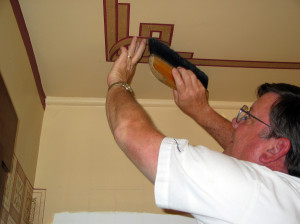
Our craftsman delicately pasting the cut-off slivers of wallpaper into a box-design on the ceiling.

